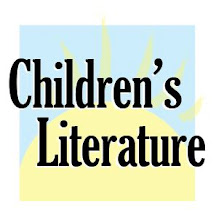This educational program is a great example to show how teachers, librarians, parents, and caregivers can incorporate The Children's Literature Comprehensive Database (CLCD) with other media to present truly comprehensive information to children and young adults.
By using simple search parameters, you can find a great list of appropriate books to tie-in to the Secrets of Stonehenge TV program. I searched for "stonehenge" and changed the pubdate to "2008" on. That's it. Other suggestions for more specific searches would be to select nonfiction and change the age ranges or grade levels under "additional search qualifiers," and also to select subject headings under "search specific fields." For more on search procedures go to http://www.childrenslit.com/use_database/search_procedures.php.
From 2 million MARC records this search narrowed down the results to 24 titles. By reading the different reviews you can determine what books fit your needs best. Because CLCD has full-text searching, a simple search on Stonehenge can lead you to books that include Stonehenge but focus on a different topic. This is one of my favorite parts of using CLCD -- that it can lead you in directions that you might not have originally thought of.
Here are a few selected reviews from that search:
Astronomy and Culture
Edith W. Hetherington and Norriss S. Hetherington
It’s the twentieth anniversary of the Hubble telescope launching--what better time to look at astronomy books? The Greenwood Guides to the Universe seven-volume series includes The Sun, The Inner Planets, Stars and Galaxies, Asteroids, Comets, Dwarf Planets, and The Outer Planets. The writing is accessible to most high school students, and the content is interesting for the browser but includes enough depth and breadth for more serious researchers. The information is as current as possible. In addition to the standard volumes on the components of the universe, the series contains two unique volumes: Cosmology and the Evolution of the Universe and Astronomy and Culture. Astronomy and Culture examines the history of astronomy from Stonehenge to recent discoveries. There are unique and interesting chapters on mythology and astronomy, calendars, extraterrestrial life and science fiction, and astronomy and religion. This set will be used for reports and for those interested in astronomy. It is a great choice for updating your collection in this changing scientific area. (Greenwood Guides to the Universe) VOYA CODES: 5Q 2P S (Hard to imagine it being any better written; For the YA with a special interest in the subject; Senior High, defined as grades 10 to 12). 2009, Greenwood, 231p.; Glossary. Index. Illustrations. Photos. Charts. Biblio. Further Reading., $65. Ages 15 to 18. Reviewer: Susan Allen (VOYA, August 2010 (Vol. 33, No. 3)).
Marc Aronson
Working with chief archaeologist of the Riverside Project, Mike Parker Pearson, the author discusses the often-serendipitous nature of scientific discovery. This book does not deal with questions about how Stonehenge was built, but rather with understanding why it was built. The conventional wisdom--that it served as a temple--was turned on its head when an archaeologist from Madagascar was brought in to look at the site, and he suggested that it was a place to honor and assist the transit of the dead. Having studied a similar culture on Madagascar where the people built magnificent edifices of stone for the dead while living in humble wooden structures, Ramilisonina caused archaeologists to look at Stonehenge--and its surroundings--in a totally new way, leading to monumental discoveries of adjacent sites that fit with this new theory. The science of archaeology has advanced greatly in the last couple of decades and some of the earlier data that had been puzzling those studying Stonehenge turned out to be miscalculations by earlier scientists. Wonderful photographs of people as well as places, and abundant supplementary information in the form of chronologies, brief biographies of relevant archaeologists, and suggestions for further reading and research are plusses here. But perhaps the book’s most unique contribution are these ideas: science often advances by stops and starts; new knowledge is often as much the result of imagination and inspiration as hard detailed fact gathering; and there is always something new to learn. 2010, National Geographic Society, $17.95. Ages 7 to 14. Reviewer: Paula McMillen, Ph.D. (Children's Literature).
Kate Riggs
This brief book about Stonehenge gives information about the famous circle of enormous stones located on England’s Salisbury Plain. Color photographs illustrate the area, the stones and their layout pictured at different times of day, visitors to the site, and contemporary Druid worshippers. The text points out that since the installation was completed around 3,500 years ago, the stones do not look exactly as they originally did. All have been worn down by centuries of weather, some have fallen over, and some have been taken away for use in other structures. The eighty bluestones that originally made up the inner circle were brought from the Welsh mountains, and the much larger sarcen rocks were arranged around them later. The reasons for building Stonehenge remain a mystery, though many people believe it was a place of worship. A very popular landmark, Stonehenge attracts nearly a million visitors every year. The text is followed by a four-word glossary, two suggestions for further reading, and a brief index. The book is part of the “Places of Old” series. 2009, Creative Education/The Creative Company, $24.25. Ages 6 to 9. Reviewer: Judy DaPolito (Children's Literature).
Emily Griffin
CLCD








No comments:
Post a Comment